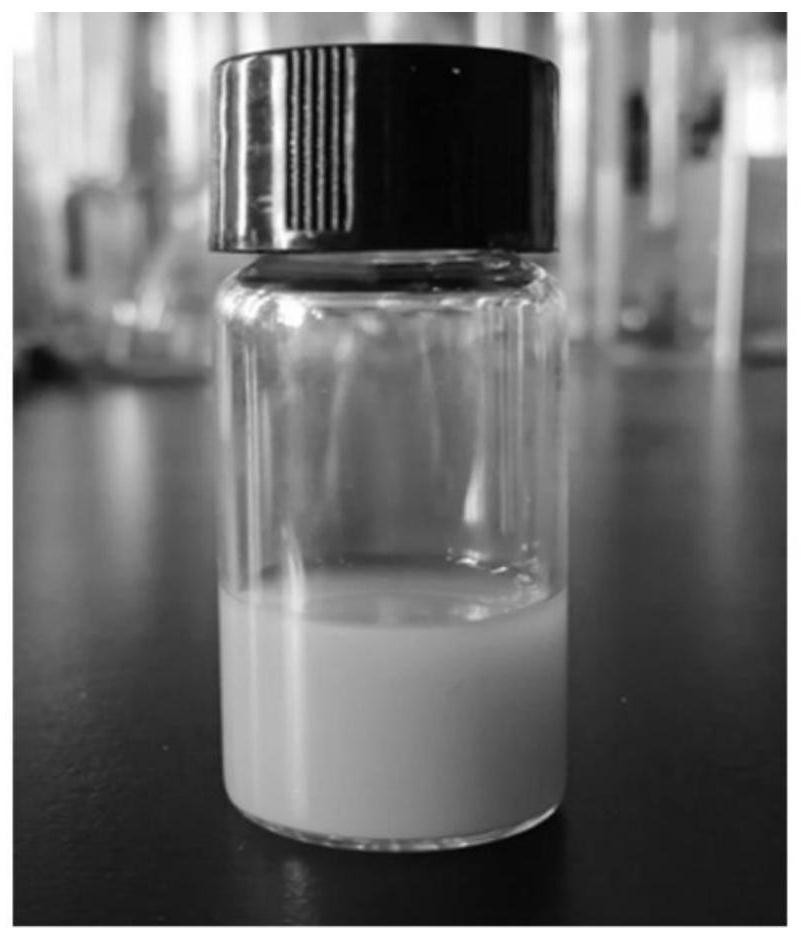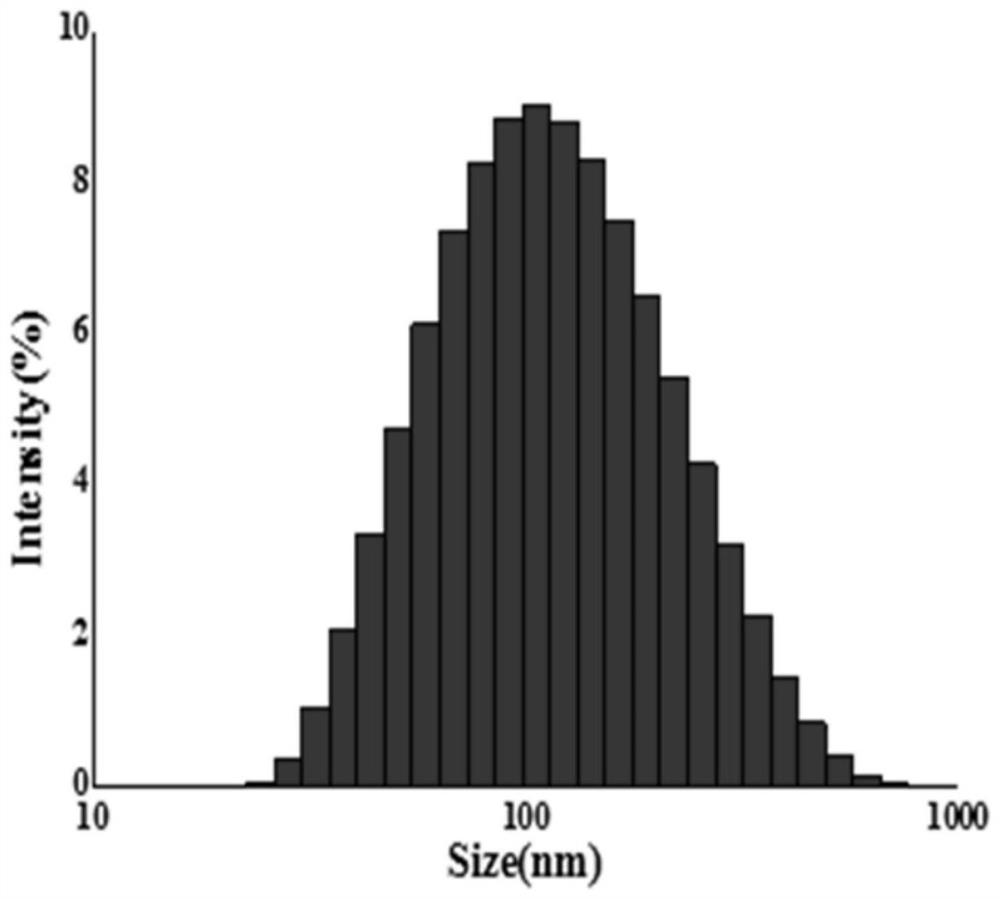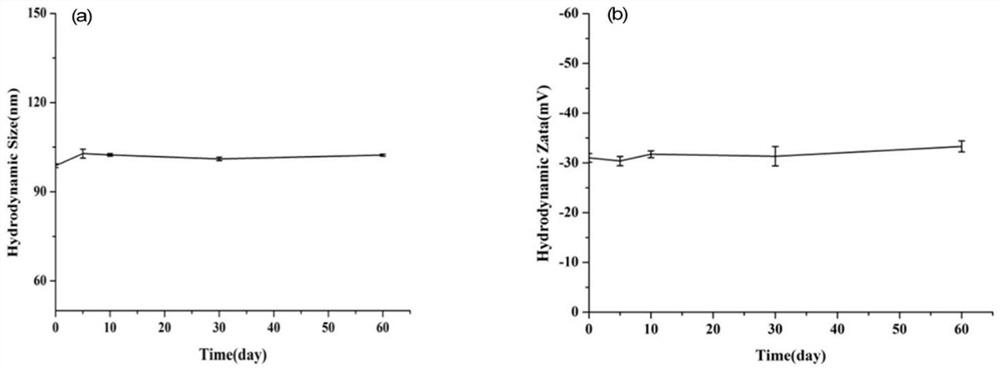Phase-change nanobubble, and preparation method and application thereof
A nanobubble and phase transition technology, applied in its preparation, new multifunctional imaging nano-contrast agent, phase transition nanobubble field, can solve the problem of loss of biological activity of targeting factors, poor reproducibility of preparation process, difficulty in obtaining microbubbles, etc. problems, achieving highly uniform particle size, easy large-scale preparation, and good reproducibility
- Summary
- Abstract
- Description
- Claims
- Application Information
AI Technical Summary
Problems solved by technology
Method used
Image
Examples
preparation example Construction
[0038] A preparation method of phase transition nanobubbles, comprising the following steps:
[0039] (1) Chitosan-polylactic acid graft copolymer is dissolved in dichloromethane as coating material, becomes oil 1 namely O 1 phase, liquid perfluoropentane as oil 2 ie O 2 phase, mix the two phases in an ice bath to make O 2 The phase is uniformly dispersed in O 1 O 2 / O 1 Mutually;
[0040] (2) will O 2 / O 1 The phase was gradually added dropwise into the water phase under magnetic stirring in an ice bath to obtain a pre-complex emulsion O 2 / O 1 / W phase;
[0041] (3) The formed pre-double emulsion phase is subjected to ultrasonic treatment until O with uniform particle size is obtained. 2 / O 1 / W complex milk;
[0042] (4) will O 2 / O 1 / W The complex emulsion is magnetically stirred under the condition of an ice bath, solidified to form nanobubbles, and then centrifuged to obtain a precipitate and then redispersed to obtain a nanobubble aqueous dispersion loade...
Embodiment 1
[0060] (1) prepare low molecular weight chitosan
[0061] With reference to the literature method (Guo Kaihua. Hydrogen peroxide method degradation preparation process of oligomeric chitosan [J]. Silicon Valley, 2010 (19): 25+34.) get 5g chitosan in 2% acetic acid solution of 100ml, wait for shell After the polysaccharide is completely dissolved, slowly drop a certain concentration of H2O2, react at 60°C for 5 hours, adjust the pH value to neutral with 2mol / L NaoH, filter to remove impurities, and precipitate with 3-5 times the amount of absolute ethanol , precipitated low molecular weight chitosan, refrigerated for 24 hours, suction filtered, and vacuum dried.
[0062] (2) prepare chitosan-polylactic acid graft copolymer
[0063] Referring to the literature method (Liang Yanhui. The preparation and performance research of the amphiphilic chitosan-polylactic acid graft copolymer of agricultural fungicide carrier [D]. Chinese Academy of Agricultural Sciences, 2012.), take 1g l...
Embodiment 2
[0068] Nanobubble Placement Stability Test
[0069] The nanobubbles prepared in Example 1 were stored in a refrigerator at 4°C, and samples were taken at regular intervals to measure their particle size using a laser particle size analyzer to evaluate the storage stability of the nanobubbles at 4°C. For the test results, see image 3 . It can be seen from the test that the particle size and potential of the nanobubbles change very little when placed at 4°C for 2 months, indicating that the nanobubbles have good stability at 4°C.
PUM
| Property | Measurement | Unit |
|---|---|---|
| Particle size range | aaaaa | aaaaa |
| Particle size | aaaaa | aaaaa |
| Boiling point | aaaaa | aaaaa |
Abstract
Description
Claims
Application Information
 Login to View More
Login to View More - R&D
- Intellectual Property
- Life Sciences
- Materials
- Tech Scout
- Unparalleled Data Quality
- Higher Quality Content
- 60% Fewer Hallucinations
Browse by: Latest US Patents, China's latest patents, Technical Efficacy Thesaurus, Application Domain, Technology Topic, Popular Technical Reports.
© 2025 PatSnap. All rights reserved.Legal|Privacy policy|Modern Slavery Act Transparency Statement|Sitemap|About US| Contact US: help@patsnap.com



